
Transcription
THE EMOTIONAL TONE SCALE
From The Scientology Handbook
Name:
Date Started:
Date Completed:
COURSE DESCRIPTION
How often have you heard someone say, "I don't understand him"?
Sometimes irrational, unforeseen acts seem to be the norm among our fellows. The fact is, there has never been a workable method to invariably predict human behavior - until now.
L. Ron Hubbard developed just such a method, and it is applicable to all people, without exception.
With this data, it is possible to accurately predict the behavior of a potential business partner, employee or friend - before you commit to a relationship. The risks involved in human interaction can be avoided or minimized when you can predict how people will behave.
By understanding and using the information on this course, all aspects of human relationships will become more productive and more fulfilling. You'll know who to associate with, who to avoid, and you will be able to help those who are mired in uncomfortable situations with others. Imagine knowing, after a very short time, how people are likely to behave in any given circumstance. You can.
http://course.volunteerministers.org/play_video/vm_film_tone-scale
WELCOME!
You have now successfully enrolled and are almost ready to begin your first step in an exciting and practical learning process. This course will provide you with effective tools to use in your life.
This course is laid out in a step-by-step manner, with a sequence of study and exercises for you to do. Simply follow this check sheet to progress through your assignments to full completion.
The person who will be reviewing your assignments is called a "supervisor." As a trained and experienced Volunteer Minister, he or she will assist you to grasp the materials you are studying so you can apply what you have learned.
IMPORTANT NOTE
In doing this course, be very certain you never go past a word you do not fully understand. The only reason a person gives up a study or becomes confused or unable to learn is because he or she has gone past a word that was not understood.
The confusion of inability to grasp or learn comes AFTER a word you did not have defined and understood. It may not only be the new and unusual words you have to look up. Some commonly used words can often be misdefined and so cause confusion.
The datum about not going past an undefined word is the most important fact in the whole subject of study. Every subject you have taken up and abandoned had its words which you failed to get defined. Therefore, in doing this course be very, very certain you never go past a word you do not fully understand. If the material becomes confusing or you can't seem to grasp it, there will be a word just earlier that you have not understood. Don't go any further, but go back to BEFORE you got into trouble, find the misunderstood word and get it defined.
As an aid to the reader, there is a Course Glossary. You can find it at the end of your Checksheet.
Length of Course
6 to 8 hours. You may, however, do the course at your own pace. In other words, it is not timed. The course is our service to you, free of charge.
Supervision & Help
Through the length of your course, a supervisor is available to help you with any questions you may have. Or, if at any time you need assistance with your course assignments, do not hesitate to ask him or her for help. The end result is that you are fully able to apply the data contained therein.
Course Completion
Upon completion of THE EMOTIONAL TONE SCALE course, you will receive a certificate of completion.
CHECKSHEET
1. Read the article "The Tone Scale." ________
2. Essay: What is the Tone Scale? ________
3. Read the article "The Tone Scale in Full." ________
4. Read the article "Characteristics on the Tone Scale." ________
5. Read the article "Observing the Obvious." ________
6. Practical Exercise: Practice obnosis. Look around your
environment and practice seeing what is there. Notice things
which are plainly obvious. Don't allow any assumption into
your observation. Continue to practice obnosis until you are
sure you can do it without adding in any assumptions.
Write what you did. ________
7. Essay: How can obnosis be applied to help improve an
immediate situation? ________
8. Practical Exercise: Spot the tone levels of different people.
Go to a place where there are lots of people. Pick out a
person and notice his or her tone level. Do this again and
again with different people. Observe people in conversation
or engaging in some activity and note their tone levels.
Continue doing this until you are confident you can spot the
tone level of people by observing them. (Do not tell the
people you observe what tone level you think them to be in,
however.) Write what you did. ________
9. Read the article "The Hubbard Chart of Human Evaluation." ________
10. Essay: How can the Hubbard Chart of Human Evaluation be used
to predict a person's behaviour? ________
11. Practical Exercise: Using the Hubbard Chart of Human
Evaluation, consider five people you know and determine the
chronic tone level for each. (Do not tell the person what you
determined his tone level to be.) Write what you did. ________
12. Essay: What do the levels below 0.05 on the Tone Scale
indicate about a person who is in one of them? ________
13. Essay: How can emotion be used to raise a person on the
Tone Scale? ________
14. Practical Exercise: Practice spotting the tone levels by
engaging them in conversation. Take a clipboard and paper
and interview people on the street. Ask them some sample
questions such as "What's the most obvious thing about me?"
"When was the last time you had a haircut?" and "Do you think
people do as much work now as they did fifty years ago?"
Other questions of a similar nature can be used to gain
responses from the person. Determine the person's tone level
based on his responses. Is there a social tone sitting atop
his chronic tone? Repeat the interview with other people,
noting the person's tone level each time. Keep this up until
you can approach anyone and engage him in conversation and
determine his chronic tone level. (Important note: Do not
tell the person what tone level you observe him to be in, or
evaluate his tone level for him.) Write what you did. ________
15. Practical Exercise: When you have gained confidence at
Exercise 14, interview more people. Interview at least
fifteen people. With the first five, match their tone as soon
as you have spotted it. With the next five, drop below their
chronic tone and see what happens. For the last five, put on
a higher tone than theirs. Note down your observations from
doing this. Practice this with more people until you are
confident you can spot a person's tone level and then match
it, drop below it or assume a tone above it. Write what you
did. ________
16. Read the article "A Tone Scale Test." ________
17. Practical Exercise: Do a two-minute psychometry on a person.
Engage a person in a conversation and, using the technique
given in the booklet, determine what tone level the person
responds to. Repeat this with other people until you are
confident you can spot what tone level a person will respond
to. Write what you did. ________
18. Practical Exercise: Practice raising a person's tone level.
Engage a person in conversation. Once you have determined his
tone level, adopt a tone one-half to one full tone above his.
Note what happens to his tone level. Repeat this with other
people until you are confident you can raise a person on the
Tone Scale. Write what you did. ________
Well done! You have completed all steps of the course.
19. Final Essay: Now write the final Course Results Essay. Use
the box provided below to tell your supervisor how you have
personally benefited from taking this course and how you will
be able to use it in your life. Include any new realizations
you have had about yourself or others, any positive changes,
or anything you've already applied to improve some area of
your life. ________
CONGRATULATIONS! You have completed the chapter "THE EMOTIONAL TONE SCALE".
There's one more thing...
AUTHORIZATION TO PUBLISH
We often publish the success stories from the Course Results Essay of students and may want to publish yours with your permission. This is done without divulging your name or any other personal information about you, which is held in full confidentiality. Please let us know if we are authorized to publish all or part of your Course Results Essay, showing the initial letters of your name, only.
"Yes, I authorize all or part of my final Course Results Essay to be published with my initials only."
Signature: ____________________ Date: ________________________
"No, I do not authorize all or part of my final Course Results Essay to be published."
Signature: ____________________ Date: ________________________
THE END
Other posts by this author
|
2023 may 31

|
2023 apr 5
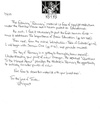
|
2023 mar 19
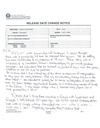
|
2023 mar 5

|
2023 mar 5
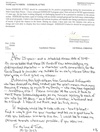
|
2023 mar 5

|
More... |
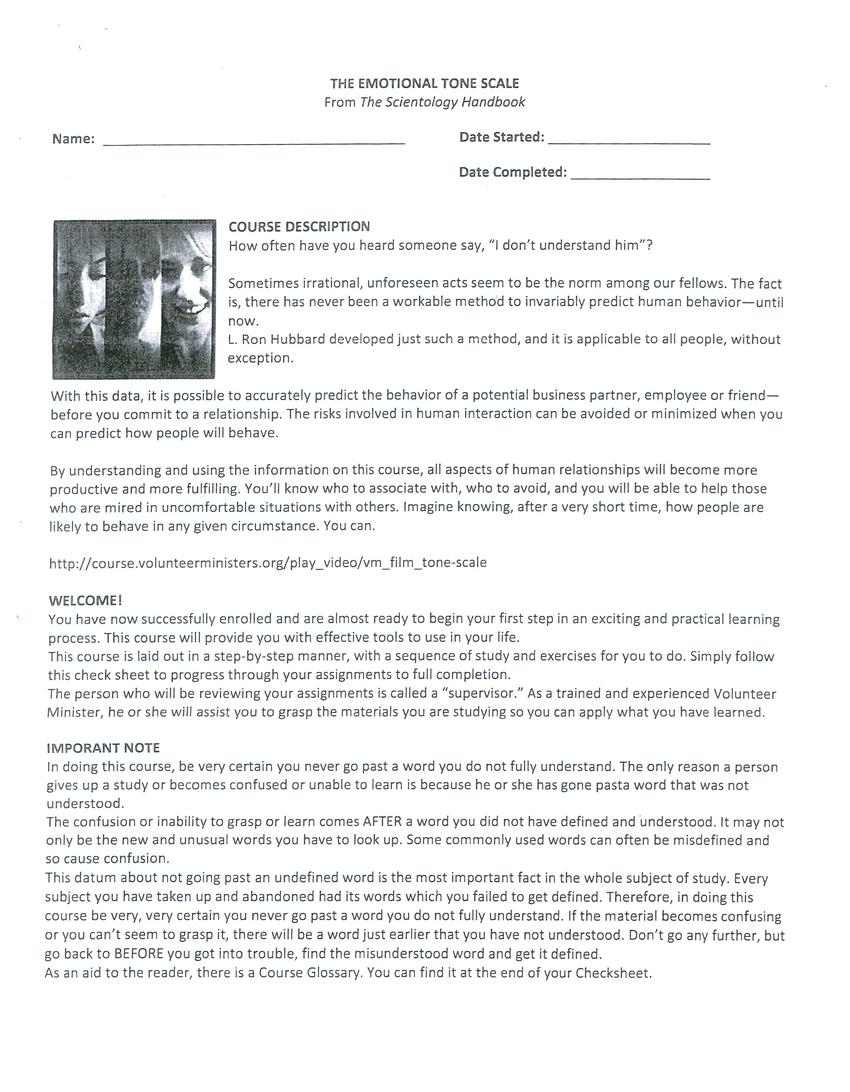
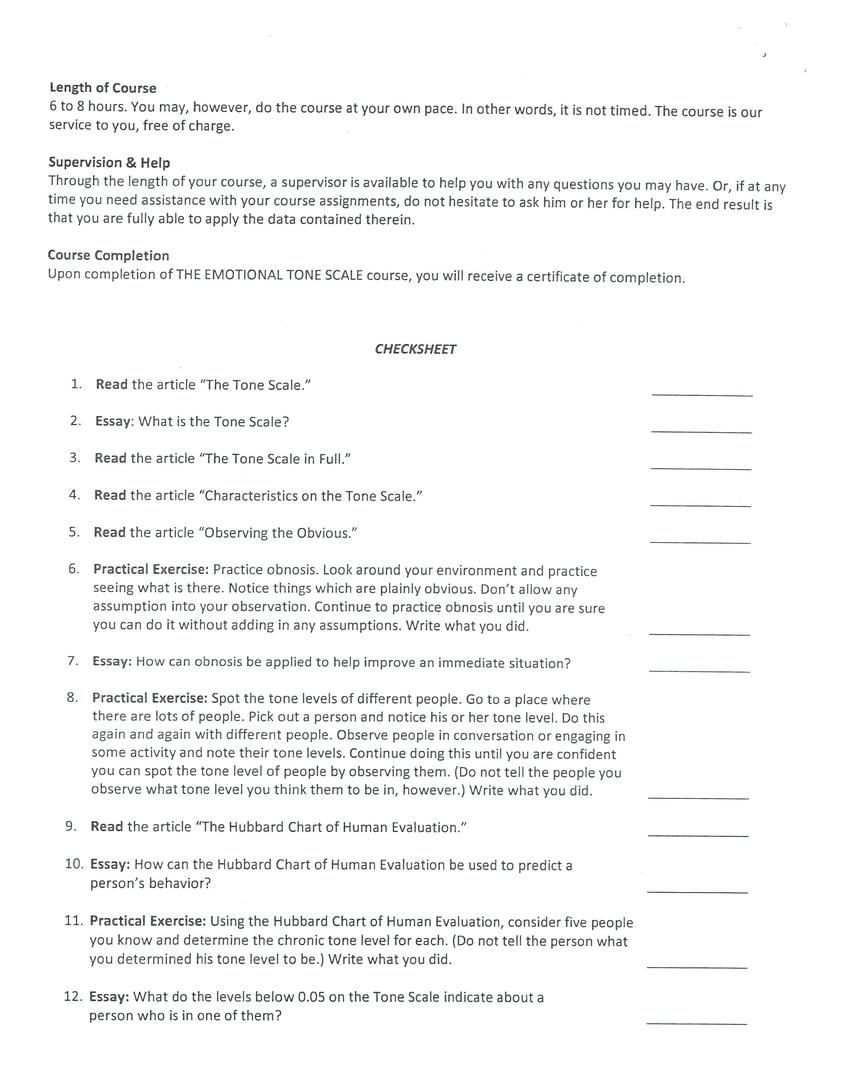
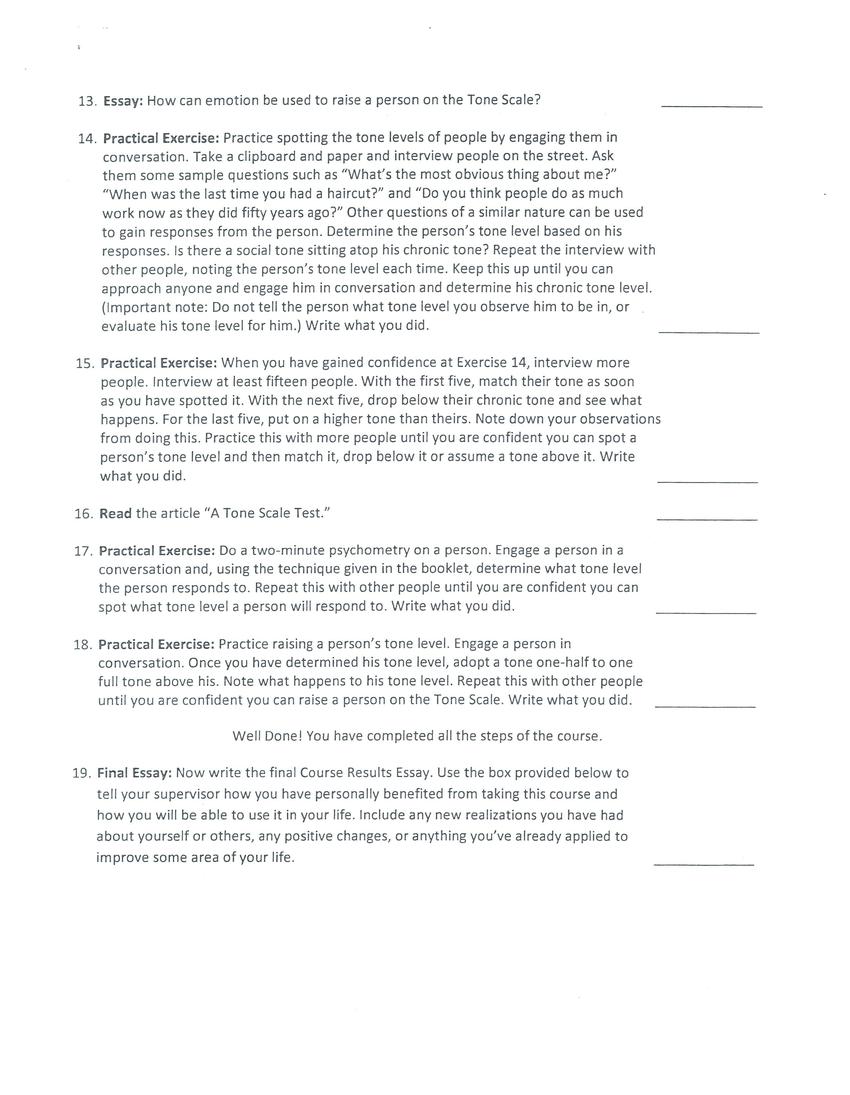
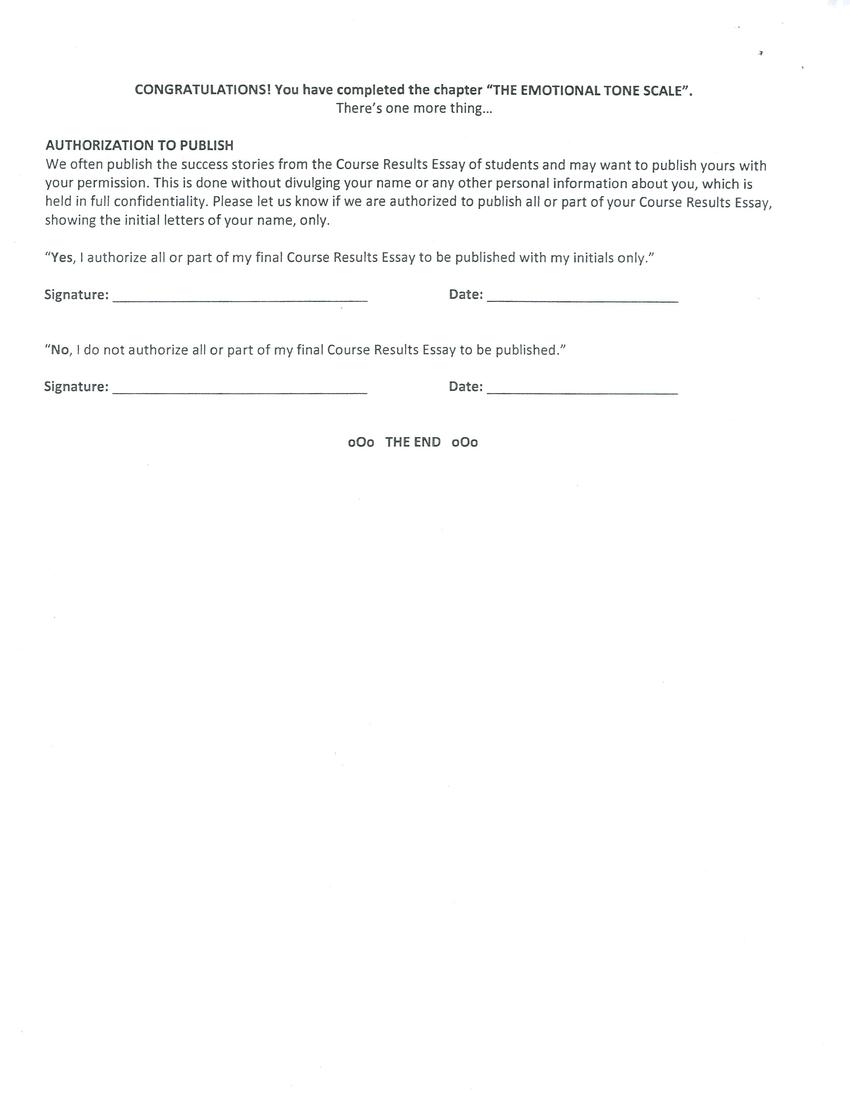

Replies (1)